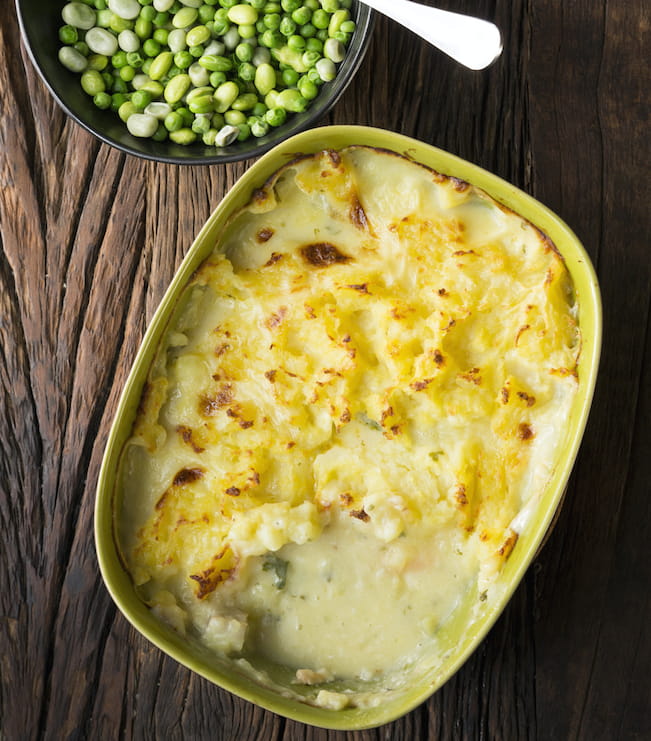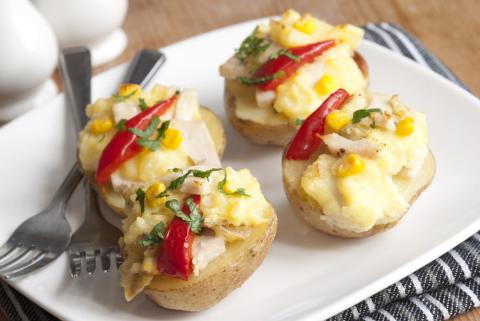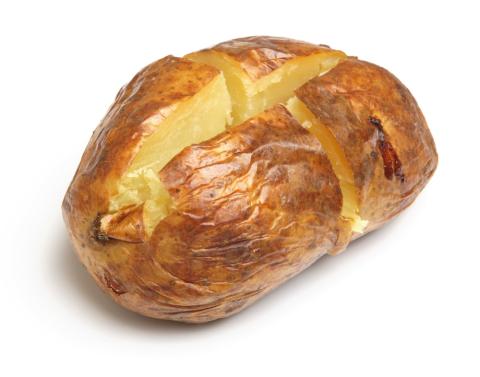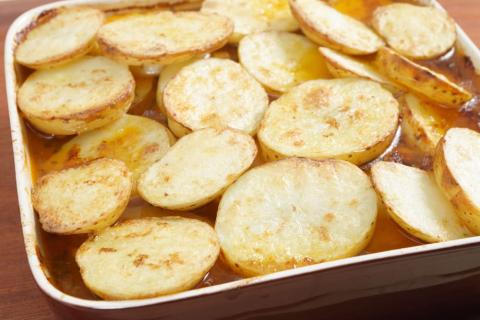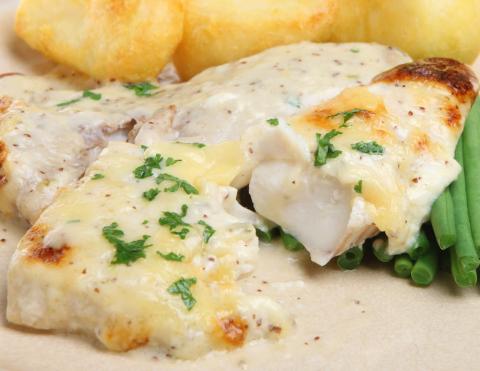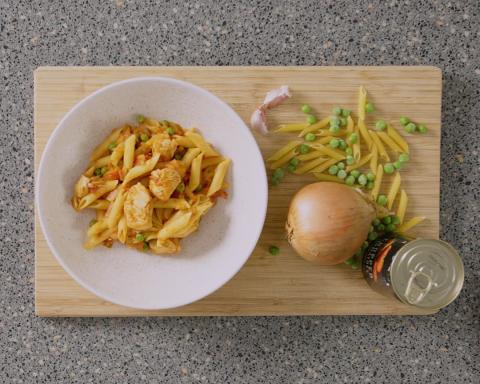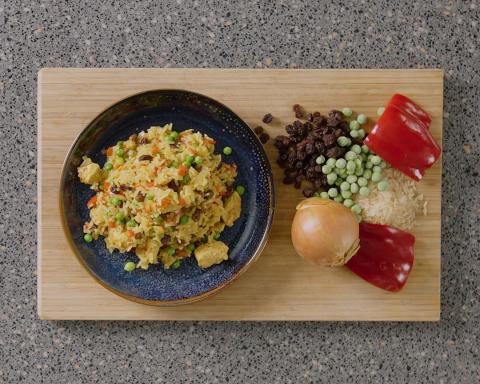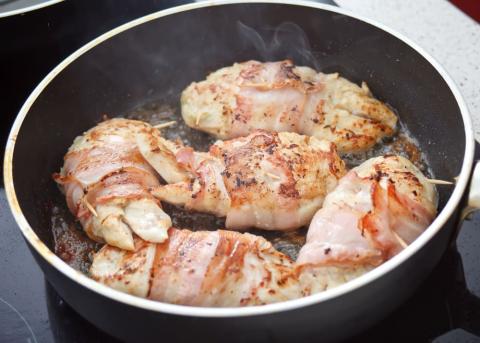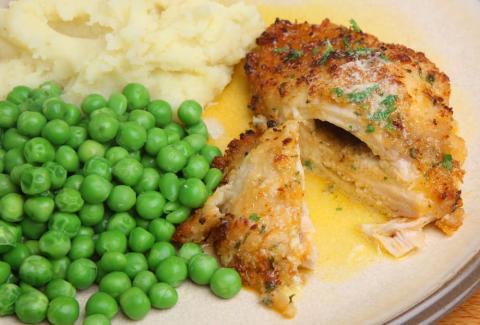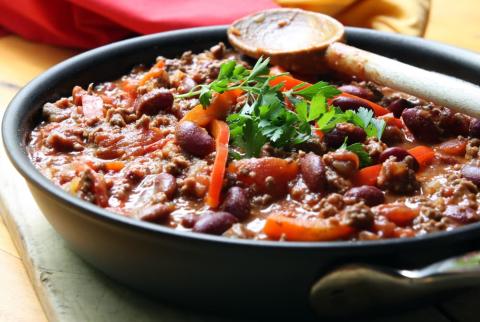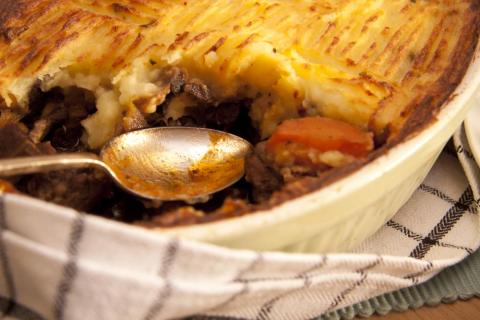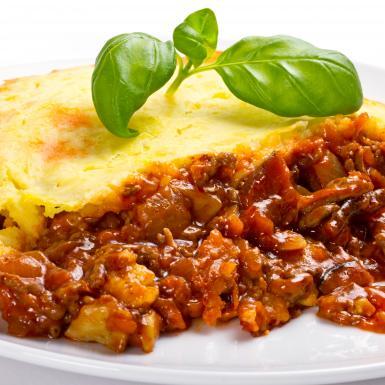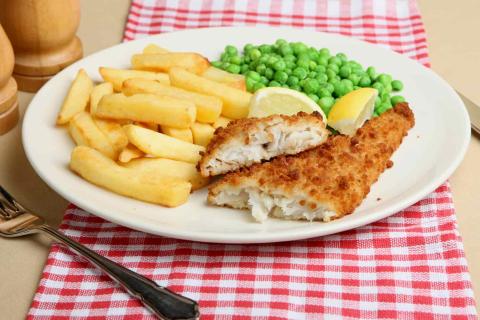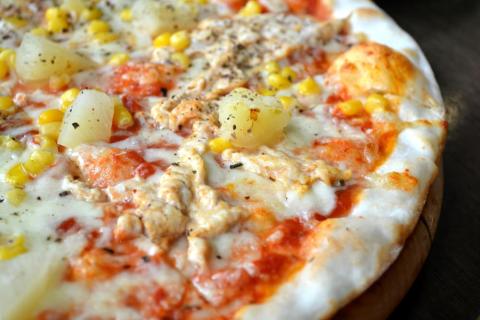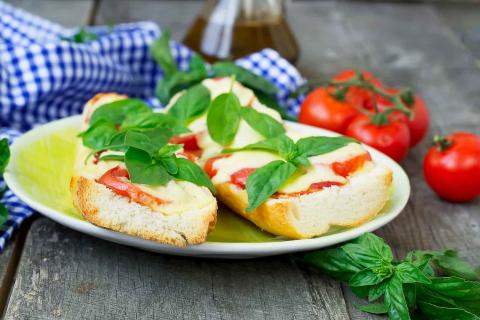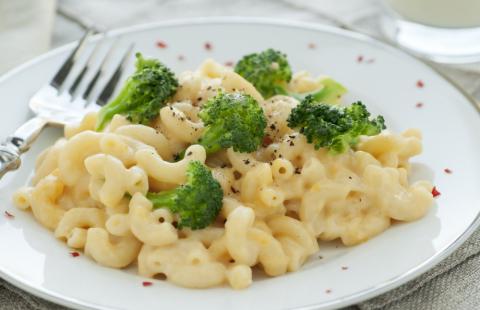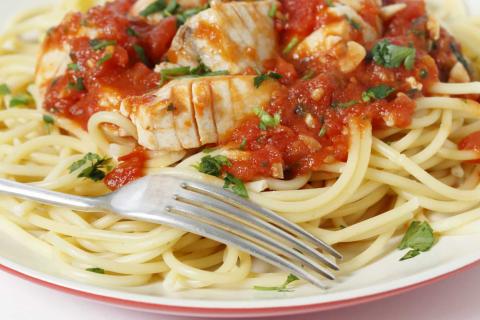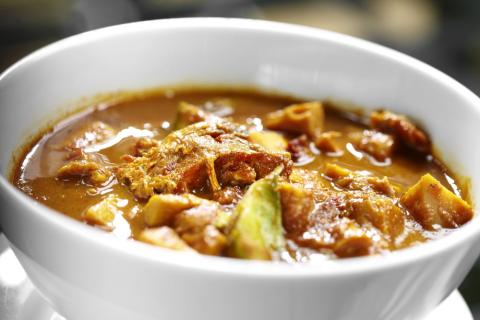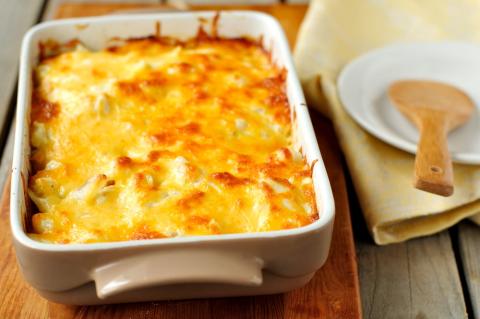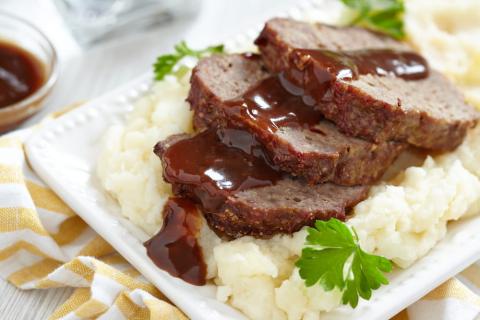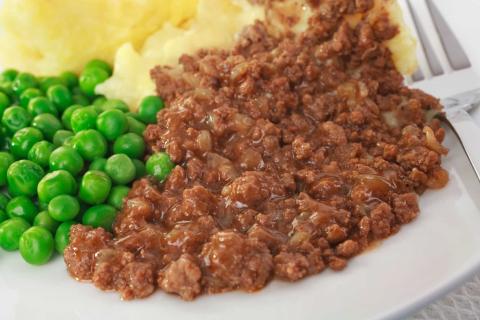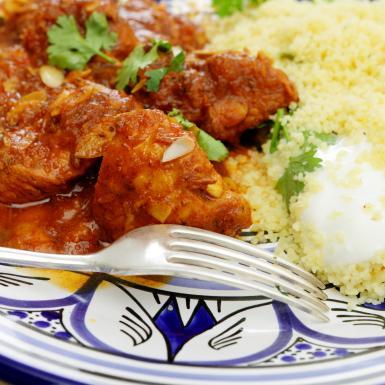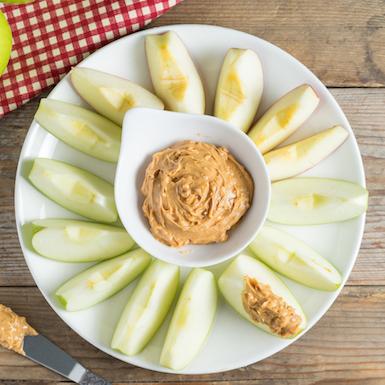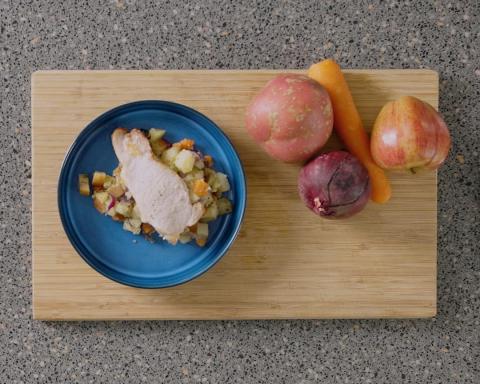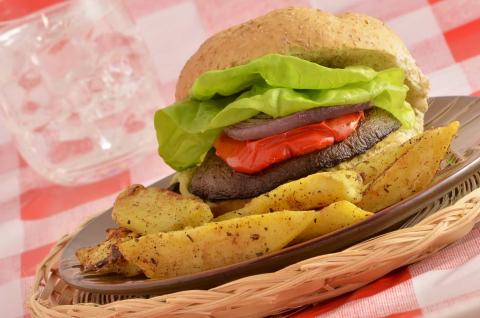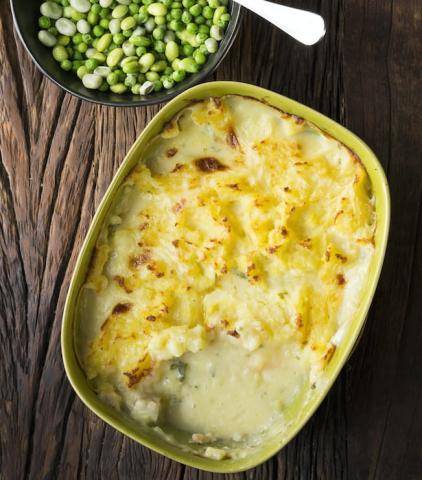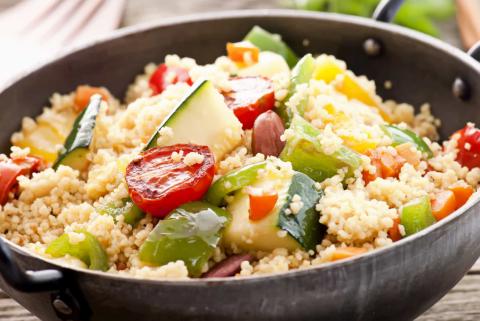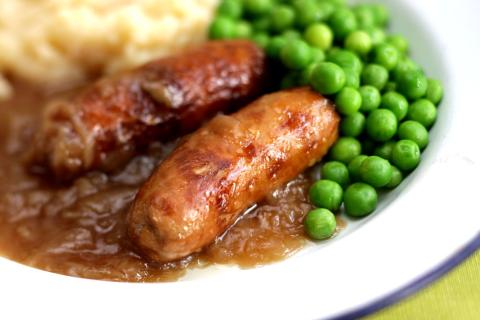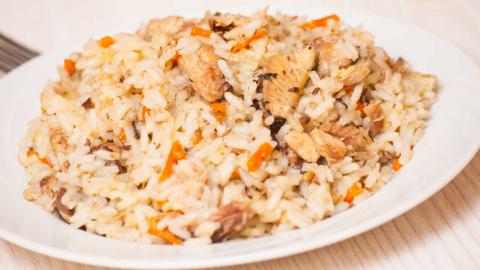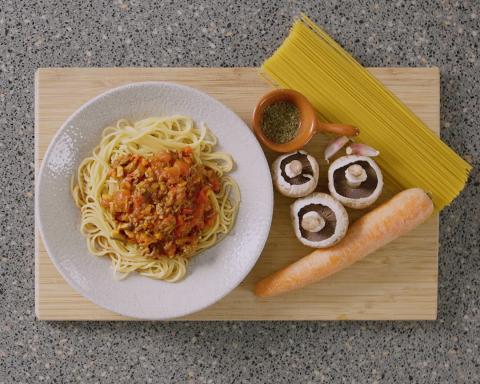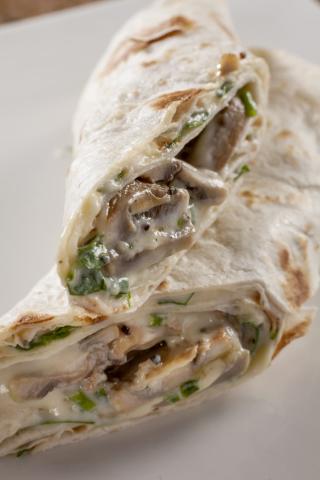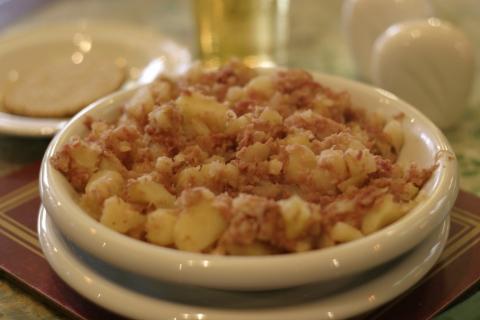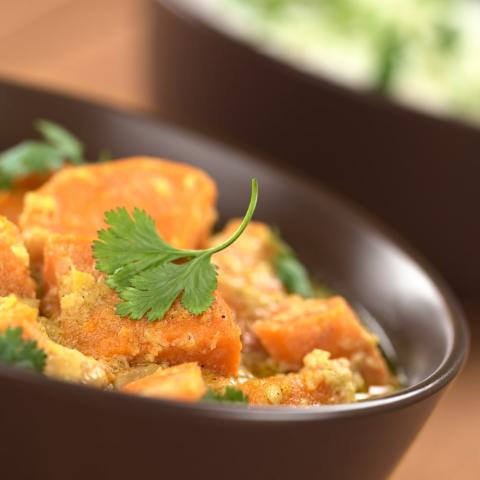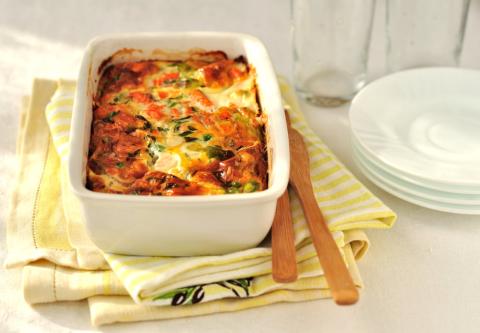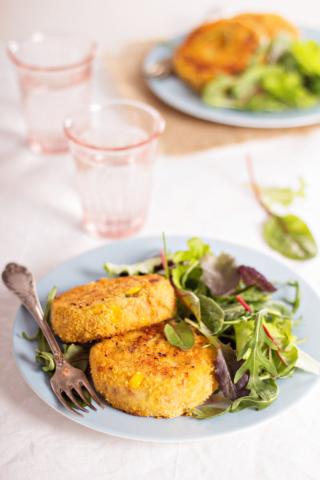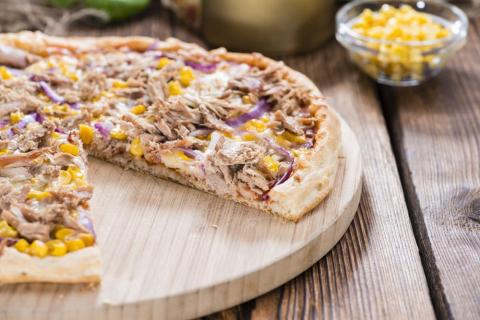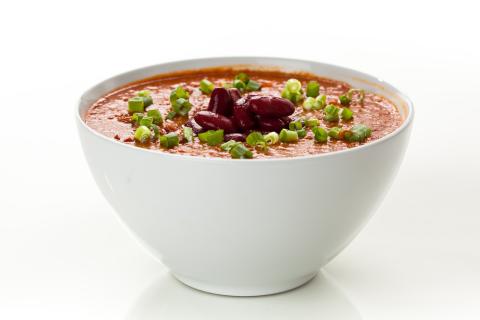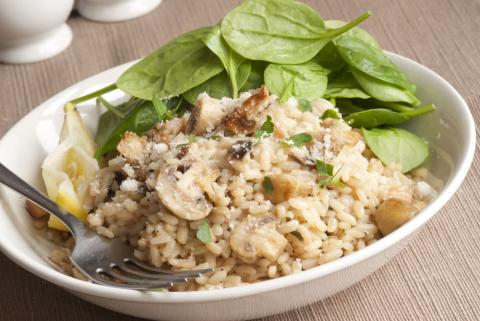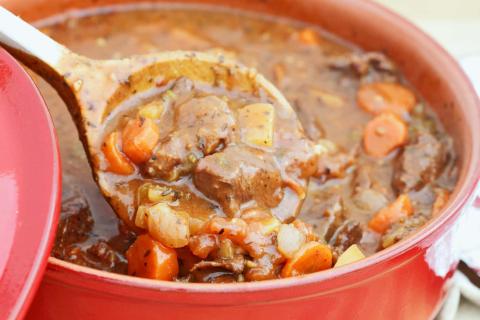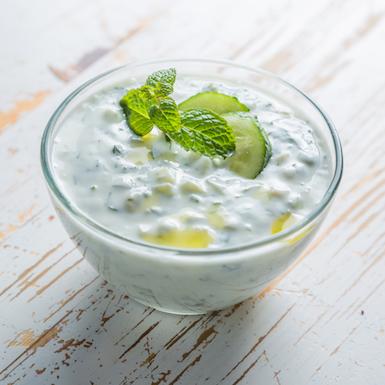- 4 Medium Sized (600g) White Fish Fillets
- 4 Large Sized (800g) Potatoes
- 1 Tablespoons (10g) Vegetable Oil
- 1 Medium Sized (150g) Onion
- 2 Sticks (60g) Celery
- 6 Frozen Tablespoons (160g) Peas
- 4 Tablespoons (60g) Margarine
- 2 ½ Tablespoons (50g) Plain Flour
- 3 Cups (568ml) Semi-Skimmed Milk
- 1 Medium Sized (85g) Tomato
- 3 Reduced Fat Tablespoons (75g) Cheddar Cheese
Ingredients
Allergy Disclaimer
Always check the label of each ingredient for allergy warnings.
Method
- Preheat the oven to 180oC / 160oC fan oven / 350oF / gas mark 4.
- Peel the potatoes and cut into small pieces, boil in a pan until soft (approximately 10-15 minutes).
- Peel the onion then chop the celery into small pieces. Heat oil in a pan and add onions and celery for around 2 minutes until they soften.
- Remove skin from fish if required and then cut into cubes. Place the onion, celery, peas and fish into an oven proof dish and mix together.
- Melt the low fat spread in a pan, remove from heat and stir in the flour to make a paste. Heat again for 1 minute and then gradually add the milk, stirring continuously until the sauce thickens. Leave a small amount of milk to mash potatoes. Pour sauce over fish.
- Drain the potatoes and mash using the remaining milk. Spread the mash over the fish, leaving no gaps. Top with grated cheese and sliced tomato.
- Bake in oven for 20-25 minutes until golden brown.
Time Saver Tips
Can be prepared in advance and cooked when required, additional cooking time will be required.
Cost Saver Tips
Look for special offers on white fish, frozen may be cheaper.
Tips for Kids
You could take them on a trip to your local fishmonger and have them pick out the fish themselves. Later, why not let them help with assembling the pie?
Nutritional Information
Based on a single serving of 585g (% of an adult's reference intake)
Energy
527 kcals ( 26 %)
2,211 kJ ( 26 %)
Fat
5.9 g ( 29 %)
Saturates
63.2 g ( %)
Sugar
14 g ( 16 %)
Salt
1 g ( 17 %)
Detailed nutritional information
| Per 100g | Per 585g serving | |
|---|---|---|
| Energy Kcals | 90 | 527 |
| Energy Kj | 378 | 2,211 |
| Protein | 5.8 g | 33.9 g |
| Total Fat | g | g |
| Saturated Fat | 1 g | 5.9 g |
| Carbohydrates | 10.8 g | 63.2 g |
| Total Sugars | 2.4 g | 14 g |
| NSP Fibre | 1.1 g | 6.4 g |
| Sodium | 74 mg | 433 mg |
| Salt | 0.2 g | 1 g |
Find out about nutritional labelling
Nutrition labels on the front of packaging
- Most of the big supermarkets and many food manufacturers display nutritional information on the front of pre-packed food.
- Front of pack nutrition labels provide information on the number of grams of fat, saturated fat, sugars and salt and the amount of energy (in kJ and kcal) in a serving or portion of a recipe.
- The labels also include information about reference intakes (expressed as a percentage) which are guidelines about the approximate amount of particular nutrients and energy required for a healthy diet.
- The colour coding tells you at a glance if the food has high (red), medium (amber) or low (green) amounts of fat, saturated fat, sugars and salt.
- The more greens on the label, the healthier the choice
- Amber means neither high nor low, so you can eat foods with all or mostly ambers on the label most of the time.
- Reds on the label means the food is high in that nutrient and these are the foods we should cut down on. Try to eat these foods less often and in small amounts.
Food shopping tips
If you’re trying to decide which product to choose, check to see if there's a nutrition label on the front of the pack. This will help you to quickly assess how your choices stack up. You will often find a mixture of red, amber and green colour coding for the nutrients. So when you're choosing between similar products, try to go for more greens and ambers and fewer reds if you want to make a healthier choice.
 Activities & Play
Activities & Play Behaviour
Behaviour Childcare
Childcare Development & Growing Up
Development & Growing Up Family, Friends & Relationships
Family, Friends & Relationships Feeding Your Baby
Feeding Your Baby Food & Eating
Food & Eating Health & Safety
Health & Safety Mental Health & Wellbeing
Mental Health & Wellbeing Money & Work
Money & Work Online Behaviour & Safety
Online Behaviour & Safety Pregnancy & First Days
Pregnancy & First Days School & Education
School & Education Sleep
Sleep

